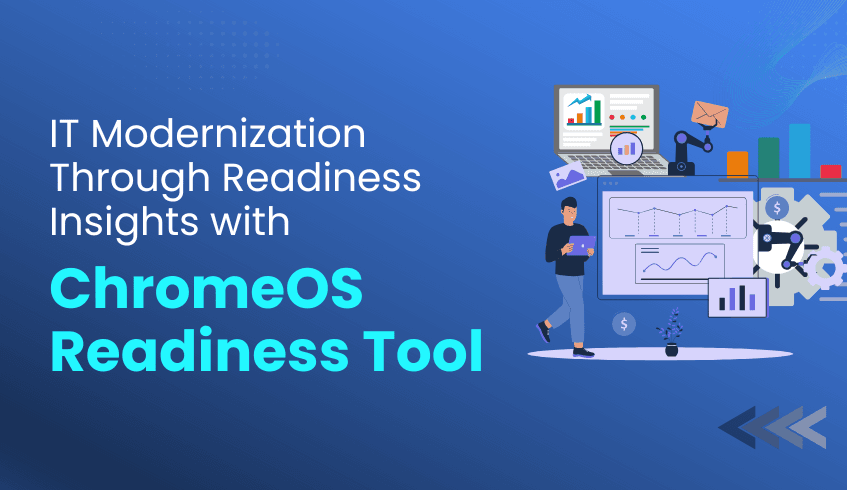
How the ChromeOS Readiness Tool Supports Application Rationalization
In any IT modernization effort especially during an operating system migration, application rationalization plays a crucial role. It helps organizations streamline their software portfolio, reduce unnecessary spending, and improve overall efficiency. As enterprises consider transitioning to ChromeOS, the ChromeOS Readiness Tool provides the essential visibility and insights needed to drive effective application rationalization.
Here’s how the tool supports this process across various stages:
1. Visibility into Application Usage
The ChromeOS Readiness Tool tracks and analyzes Windows application usage across the organization, including both foreground (actively used) and background (passively running) applications. This data helps IT teams:
Identify underutilized or unused applications that can be removed to cut licensing costs.
Spot redundant tools that serve the same purpose across teams or departments.
Focus on retaining only essential, high-impact applications.
This level of insight forms the foundation for informed decision-making around which applications to retain, retire, or consolidate.
2. Compatibility-Based Categorization
Each application detected is automatically categorized by its readiness for ChromeOS:
ChromeOS Ready – Fully compatible and ready to use.
Possibly Ready – May require configuration or virtualization support.
Blockers – Not compatible and need to be replaced or virtualized.
Unknown – Currently unclassified, pending database updates.
These readiness statuses guide IT teams in identifying:
Which apps to eliminate due to incompatibility.
Which apps can be migrated directly.
Which apps might benefit from virtualization solutions like Cameyo.
3. Insights That Reduce Complexity
Application rationalization is about simplification. By analyzing usage patterns and compatibility data, IT leaders can:
Eliminate duplication across functions.
Prioritize cloud-native or ChromeOS-compatible alternatives.
Align their application stack with modern security and management standards.
This helps reduce software bloat, streamline IT management, and ease long-term maintenance.
4. Actionable Dashboards and Reports
The ChromeOS Readiness Tool offers intuitive dashboards and exportable reports that make application rationalization both transparent and collaborative:
Web Dashboard – High-level readiness scores and app breakdowns across domains.
Pro Dashboard – Detailed foreground/background app usage categorized by readiness status.
Browser Insights – Data on browser versions, extensions, and usage trends.
Exportable Reports – Excel and Pdf exports for application usage, device readiness, and peripherals.
These tools support clear communication with leadership, security teams, and budget stakeholders when making rationalization decisions.
5. Long-Term Strategic Alignment
By using the ChromeOS Readiness Tool for application rationalization, organizations can:
Reduce reliance on legacy or non-compliant software.
Move toward a simplified, ChromeOS-compatible app ecosystem.
Cut unnecessary spending and licensing overhead.
Create a scalable, future-ready IT infrastructure.
Application rationalization isn’t a one-time task, it’s a continuous improvement strategy. The ChromeOS Readiness Tool provides the data and structure necessary to keep this strategy effective, agile, and aligned with enterprise goals. The ChromeOS Readiness Tool is more than a migration assistant, it’s a strategic asset for application rationalization. It gives IT teams the visibility, clarity, and insights needed to make smarter decisions, optimize application portfolios, and pave the way for a secure, simplified ChromeOS environment.




